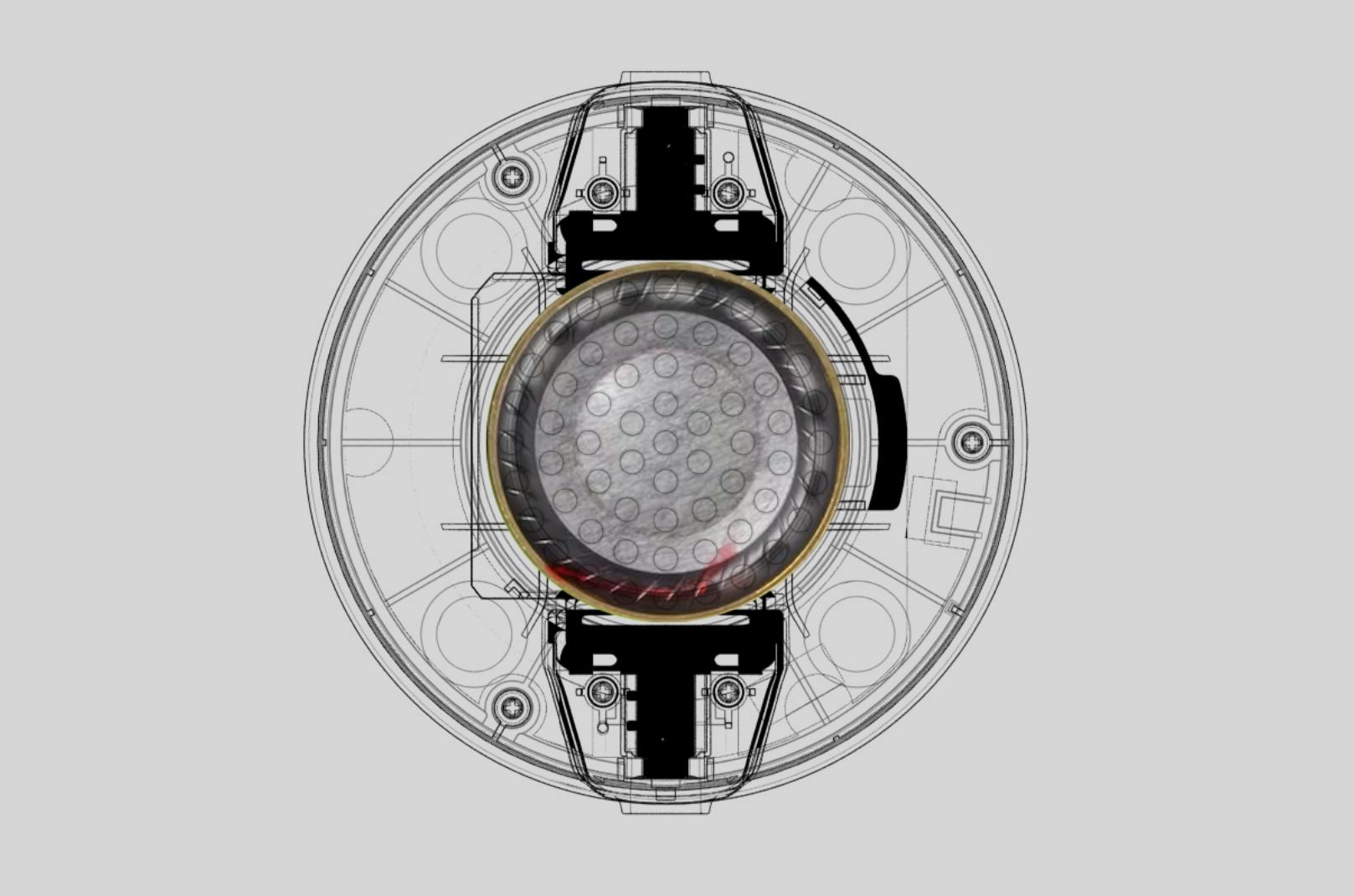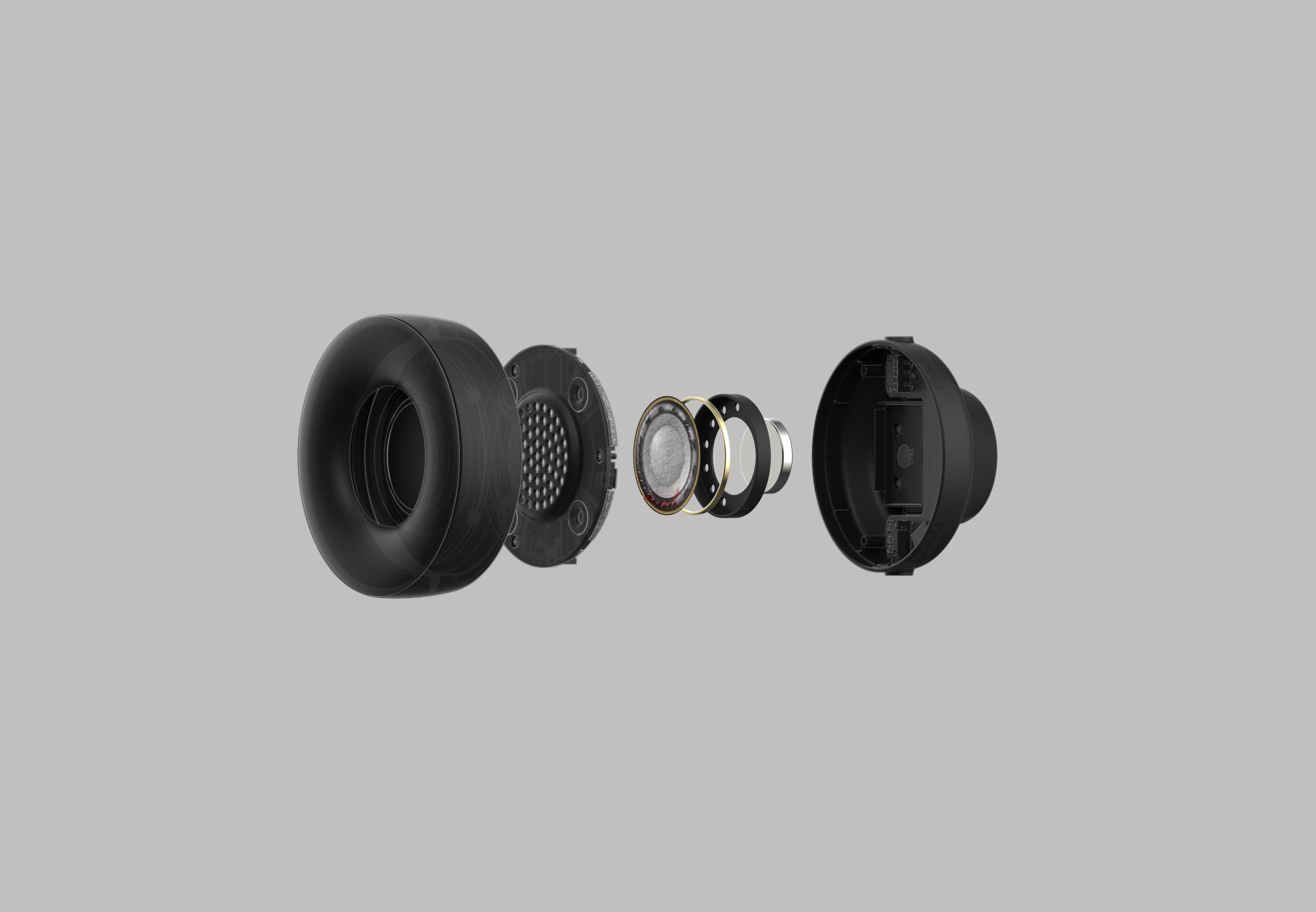Deep dive bio-cellulose diaphragms

Discover the award-winning sound of our bio-cellulose speaker diaphragms. We explore their unique features and how they deliver exceptional audio performance.
The Bio-Cellulose Diaphragm: Material and Properties
Our bio-cellulose speaker diaphragms are made of a bacterial cellulose, an organic compound grown using certain types of bacteria. Bio-cellulose is an interesting material for many reasons; it’s renewable, biodegradable, and has great acoustic properties. If you look closely at the diaphragm you'll see a structure of fine fibres. These fibres construct a very stiff but lightweight material making it ideal for a speaker diaphragm.
How Bio-Cellulose Affects Sound Quality
The diaphragm of a theoretically perfect speaker will move like a piston. Moving back and forth without tilting or wobbling or changing shape. This can be achieved by making the diaphragm material as stiff as possible. If the diaphragm material is too flexible, it will sympathetically resonate at frequencies harmonic to the frequency of the sound we are trying to reproduce. This resonating motion must be avoided because it causes harmonic distortion. There are plenty of very stiff materials, but we also need to consider the weight of the material. A heavier diaphragm requires more power to move, so to play music at the same sound pressure level we would need a more powerful amplifier that consumes more battery power. Fortunately, the bio-cellulose diaphragm is able to provide the stiffness we need without weighing more than the alternatives.
Understanding Harmonic Distortion
In short, harmonic distortion is unwanted energy at the harmonics of the sound we are trying to reproduce. The harmonics of a sound is the whole number multiples of the frequencies contained in the sound wave. So if we are trying to play a pure sine tone with a frequency of 200Hz we may also hear energy at 400Hz, 600Hz, 800Hz, and so on. When comparing speaker units, we measure the total harmonic distortion (THD), which is the root mean square of all the unwanted harmonic components in the measured sound.

The Importance of Low Distortion in Music Playback
If music is played through a poorly designed headphone that produces a high level of harmonic distortion, it will sound wrong and unnatural. This is because the harmonic distortion changes how we perceive the timbre and tonality of the sound, which is obviously problematic when producing music or mixing a track. The bio-cellulose diaphragm on the other hand is able to reproduce the music faithfully with great clarity, even at high volume levels.
Introducing the S05: Premium Sound with Bio-Cellulose Diaphragms
For the S05 speaker units, we paired the bio-cellulose diaphragm with a high-grade neodymium magnet, resulting in a speaker unit with a clear mid-range, better dynamics, and a more natural overall tonality. When tuning the speaker unit, we paid special attention to the clarity in the mid-range, without compromising the extension in the bass range. This results in a wide sound stage with great instrumental separation. The listener is able to extract and enjoy every detail in the music.
Posted on Apr 18, 2023 in Products